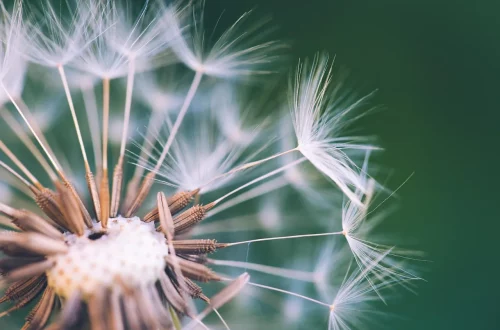
The Essential Guide to Choosing the Right Men’s Brush for Grooming
Grooming is an essential part of a man’s daily routine, influencing not only personal appearance but also confidence and self-presentation. A well-groomed man often leaves a lasting impression, and one of the most vital tools in achieving this is the right grooming brush. But with so many options available, choosing the right brush can feel overwhelming. Understanding the various types of brushes, their materials, and how they cater to different hair types can make a significant difference in your grooming experience. A quality brush not only detangles and styles hair but also promotes scalp health by distributing natural oils. Investing time in selecting the right grooming brush is a step towards elevating your grooming game. This guide will take you through the key factors to consider when choosing a grooming brush suited to your individual needs, ensuring that you have the right tools at your disposal for a polished look.
Understanding Different Types of Grooming Brushes
When it comes to grooming brushes, there are several types designed to meet various needs. The most common categories include paddle brushes, round brushes, and vent brushes, each serving a unique purpose in hair care and styling.
Paddle brushes are ideal for straightening hair. They have a wide, flat surface that allows for smooth strokes, making them perfect for medium to long hair. The bristles are typically spaced apart, providing excellent detangling without causing breakage. This type of brush is also great for applying hair products evenly through the hair, which can enhance shine and manageability.
Round brushes, on the other hand, are essential for creating volume and curls. The cylindrical shape helps lift the roots while styling, making it an excellent tool for blow-drying. These brushes come in various sizes; smaller ones create tighter curls, while larger ones help achieve loose waves. Choosing the right size depends on the desired hairstyle, so it’s important to consider what look you want to achieve.
Vent brushes are designed for quick drying and detangling. With their wide-spaced bristles and open design, they allow air to circulate, speeding up the drying process. This type of brush is especially useful for individuals with thick or wavy hair, as it can help reduce frizz and enhance the natural texture of the hair.
Additionally, there are specialized brushes for specific hair types, such as boar bristle brushes for fine hair and wide-tooth combs for curly hair. Understanding the different types of brushes available can help you select the right one for your grooming routine, ensuring that your hair looks its best every day.
Choosing the Right Material for Your Brush
The material of a grooming brush significantly affects its performance and suitability for your hair type. Brushes are typically made from various materials, including plastic, wood, and natural fibers, each offering unique benefits.
Plastic brushes are lightweight and affordable, making them popular for everyday use. They are easy to clean and often come in various colors and styles. However, some plastic brushes can generate static, which may not be ideal for all hair types. If you have fine or frizzy hair, consider opting for a brush that minimizes static.
Wooden brushes are known for their durability and natural aesthetics. They can be gentler on the hair and scalp, making them a good choice for those with sensitive skin. Additionally, wooden brushes often have natural oils that can help condition the hair while brushing. However, they may require more maintenance to keep them in good condition.
Natural fiber brushes, such as boar bristle brushes, are renowned for their ability to distribute oils from the scalp through the hair. This promotes healthy, shiny hair and can help reduce the need for additional styling products. Boar bristle brushes are particularly beneficial for fine and thinning hair, as they help add volume and texture without weighing the hair down.
When selecting a brush, consider your hair type and grooming goals. The right material can enhance your brushing experience, leading to healthier hair and a more polished appearance.
Brushing Techniques for Optimal Grooming
Using the right brushing technique is crucial for achieving the best results from your grooming brush. Proper brushing not only helps in detangling but also promotes scalp health and distributes natural oils throughout the hair.
Start by sectioning your hair, especially if it is thick or curly. This makes it easier to manage and reduces the risk of breakage. Begin brushing from the ends of your hair, gradually working your way up to the roots. This technique minimizes tugging and pulling, which can damage hair strands.
For those with curly hair, it’s advisable to brush while the hair is wet and conditioned. This helps reduce frizz and allows for easier detangling. Consider using a wide-tooth comb or a specially designed detangling brush to avoid disrupting the natural curl pattern.
When using a round brush, incorporate it into your blow-drying routine. Position the brush at the roots and roll it down towards the ends while directing the heat from the dryer. This technique not only adds volume but also helps create smooth, polished styles.
Remember to clean your grooming brush regularly. Remove hair strands and product buildup to maintain its effectiveness and hygiene. A clean brush performs better and contributes to healthier hair.
Incorporating these brushing techniques into your grooming routine can significantly enhance the appearance and health of your hair, making the most of the tools at your disposal.
Maintaining Your Grooming Brush for Longevity
Taking care of your grooming brush is essential for ensuring its longevity and effectiveness. Proper maintenance not only extends the life of your brush but also promotes healthier hair and scalp.
Start by regularly removing hair strands from the bristles. This simple task can prevent buildup and maintain the effectiveness of the brush. Use a comb or your fingers to gently pull hair out of the bristles, ensuring it is clean after every use.
Cleaning your brush is another important aspect of maintenance. Depending on the material, you can wash your brush with warm water and a mild shampoo. For wooden brushes, avoid soaking them as this can damage the wood. Instead, use a damp cloth to wipe them down, ensuring they are free from product residue.
Store your brushes properly to avoid damage. Avoid placing them in areas where they can get tangled or crushed, as this can warp the bristles. A dedicated brush holder or a drawer can help keep them organized and in good condition.
Lastly, periodically assess the condition of your brush. If the bristles are worn out or damaged, it may be time to invest in a new one. A well-maintained grooming brush will serve you better in achieving your desired grooming results.
In conclusion, selecting the right grooming brush is a crucial step in any man’s grooming routine. By understanding the different types of brushes, materials, techniques, and maintenance, you can enhance your grooming experience and achieve the best results for your hair.
**Disclaimer:** This article is not intended as medical advice. For any health-related issues, please consult a healthcare professional.




